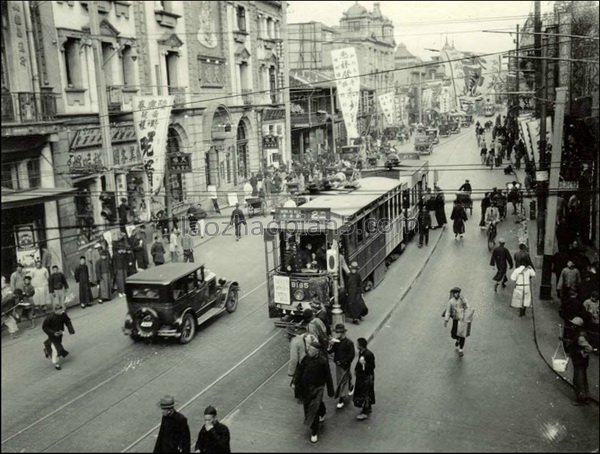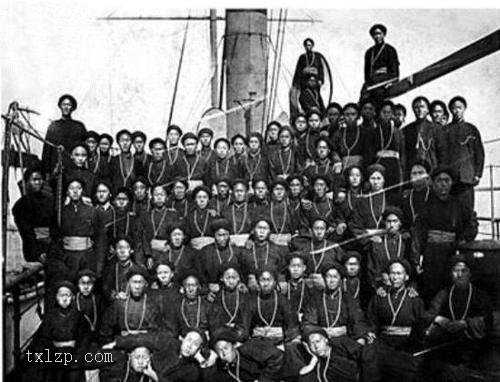Period:Song dynasty Production date:10thC-13thC
Materials:jade
Technique:carved, incised,
Subjects:cattle (buffalo)
Dimensions:Height: 3.20 centimetres Length: 8.80 centimetres
Description:
Jade recumbent buffalo, the stone of greyish-green tone with brown marking and veining, the animal lying with head up and well carved horns touching it’s hump, the small tail curling against the right hind quarter.
IMG
![图片[1]-figure BM-2022-3034.263-China Archive](https://chinaarchive.net/Song dynasty/Jades/672_4.jpg)
![图片[2]-figure BM-2022-3034.263-China Archive](https://chinaarchive.net/Song dynasty/Jades/672_1.jpg)
![图片[3]-figure BM-2022-3034.263-China Archive](https://chinaarchive.net/Song dynasty/Jades/672_3.jpg)
Comments:Song dynasty or later. The buffalo is highly realistic, with a large horned head, humped shoulders and rounded hind quarters. It is quite a solid carving with smoothly rounded surfaces and a slightly matt polish, suggesting the skin of a powerful, sleek creature. Lying on the ground, the buffalo raises its head and turns it slightly to the right. Behind the head are three incised, wavy lines and it has large, ridged, curved horns. The round eyes lie below an incised line, and the nostrils and mouth are also incised. Tiny ears are tucked below the horns. Bold ridges suggest the animal’s ribs and strong sculptural carving indicates the jaw-line of the head and the limbs and legs. A tiny tail is striated with incised lines. The underbelly is softly curved and drawn into a ridge below the neck. The buffalo’s legs are folded underneath its body. The streaking of the stone suggests the skin of the animal. The buffalo is not pierced and therefore did not function as a toggle. Figures of buffaloes do not constitute a particularly large category among pre-Ming jade animal carvings. A steatite ox occurs in a Tang tomb and stone carvings of single-horned animals from a Song tomb represent a slightly later stage. None of these pieces is particularly like the present carving. This buffalo has a smoothness and relaxed appearance that seem to derive from the painting tradition, where buffaloes were often depicted with their boy minders. Water droppers in the shape of a buffalo with a boy seated on its back, in both ceramic and bronze, were popular in the Yuan period. It is possible that a vogue for pastoral imagery was instrumental in the carving of jade buffaloes. Once they were established in the jade repertoire, buffaloes continued to be made for some time, probably throughout the Yuan, Ming and Qing dynasties. See Rawson 1995, p.371, cat.no.26.14. Song period, 960 – 1279 AD. Length: 9:00 cm
Materials:jade
Technique:carved, incised,
Subjects:cattle (buffalo)
Dimensions:Height: 3.20 centimetres Length: 8.80 centimetres
Description:
Jade recumbent buffalo, the stone of greyish-green tone with brown marking and veining, the animal lying with head up and well carved horns touching it’s hump, the small tail curling against the right hind quarter.
IMG
![图片[1]-figure BM-2022-3034.263-China Archive](https://chinaarchive.net/Song dynasty/Jades/672_4.jpg)
![图片[2]-figure BM-2022-3034.263-China Archive](https://chinaarchive.net/Song dynasty/Jades/672_1.jpg)
![图片[3]-figure BM-2022-3034.263-China Archive](https://chinaarchive.net/Song dynasty/Jades/672_3.jpg)
Comments:Song dynasty or later. The buffalo is highly realistic, with a large horned head, humped shoulders and rounded hind quarters. It is quite a solid carving with smoothly rounded surfaces and a slightly matt polish, suggesting the skin of a powerful, sleek creature. Lying on the ground, the buffalo raises its head and turns it slightly to the right. Behind the head are three incised, wavy lines and it has large, ridged, curved horns. The round eyes lie below an incised line, and the nostrils and mouth are also incised. Tiny ears are tucked below the horns. Bold ridges suggest the animal’s ribs and strong sculptural carving indicates the jaw-line of the head and the limbs and legs. A tiny tail is striated with incised lines. The underbelly is softly curved and drawn into a ridge below the neck. The buffalo’s legs are folded underneath its body. The streaking of the stone suggests the skin of the animal. The buffalo is not pierced and therefore did not function as a toggle. Figures of buffaloes do not constitute a particularly large category among pre-Ming jade animal carvings. A steatite ox occurs in a Tang tomb and stone carvings of single-horned animals from a Song tomb represent a slightly later stage. None of these pieces is particularly like the present carving. This buffalo has a smoothness and relaxed appearance that seem to derive from the painting tradition, where buffaloes were often depicted with their boy minders. Water droppers in the shape of a buffalo with a boy seated on its back, in both ceramic and bronze, were popular in the Yuan period. It is possible that a vogue for pastoral imagery was instrumental in the carving of jade buffaloes. Once they were established in the jade repertoire, buffaloes continued to be made for some time, probably throughout the Yuan, Ming and Qing dynasties. See Rawson 1995, p.371, cat.no.26.14. Song period, 960 – 1279 AD. Length: 9:00 cm
© Copyright
The copyright of the article belongs to the author, please keep the original link for reprinting.
THE END



![[Qing Dynasty] British female painter—Elizabeth Keith, using woodblock prints to record China from the late Qing Dynasty to the early Republic of China—1915-China Archive](https://chinaarchive.net/wp-content/uploads/2022/11/image-191x300.png)

